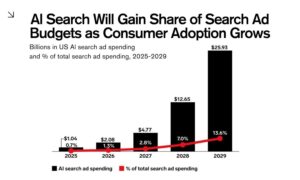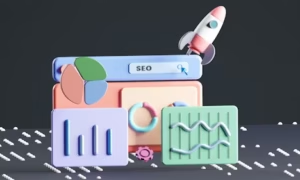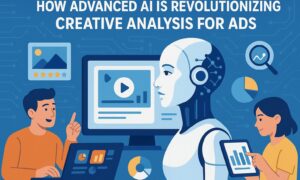Business owners in Perth face some serious marketing challenges. Although the city retains some of its small-town feel, with just over two million residents, it is considered a medium-sized metropolis and has business dynamics typical of other well-developed Australian cities. Perth’s isolation from other major Australian markets has also created unique hurdles in terms of culture and market reach.
Given the circumstances, properly localised digital marketing is essential for efficiently reaching and converting Perthite customers. And though businesses have plenty of options for doing so, Google Ads and Facebook Ads are two of the most popular picks, thanks to their versatility and proven effectiveness at local marketing.
But before you look for a digital marketing agency in Perth, it helps to understand the concept of the sales funnel to better contextualise the roles of Google and Facebook ads in the customer journey.
Understanding Marketing Funnels
Whether you choose to describe them as conversion pipelines, purchase funnels, or anything else, marketing funnels are merely rough metaphors to help visualise the customer journey and the paths they must take before they make a purchase. While these visual representations can get highly complex, the classic marketing funnel that continues to be used by businesses the world over merely comprises four stages:
- Awareness (Top of the Funnel): This is the point where potential customers become aware of your brand. This can happen through any channel, including your storefront windows, word of mouth, and traditional mass media. However, with people spending more and more time online, channels like Facebook and Google are proving to be invaluable for driving brand awareness.
- Interest (Middle of the Funnel): In this stage, potential customers show a genuine interest in your products or services. They might engage with your website, follow your social media profiles, or subscribe to your content to learn more about what you offer. If you have a physical storefront and your customers are Perth locals, they might even drop by to do some window shopping.
- Decision: Here, prospects are considering whether to make a purchase. They may compare your offerings, read reviews, and interact directly with your brand through inquiries or consultations. While customers can often go back and forth between the interest and decision stages, a talented sales team should be able to push many of them through to the next stage.
- Action (Bottom of the Funnel): This is where prospects convert into paying customers or take a different desired action, such as signing up for an email newsletter.
Marketing and sales strategies that work well in one part of the funnel will not necessarily work in the other parts. For instance, social media influencer marketing is very different from discounts and free trials. The former excels at building trust and awareness at the top of the funnel to guide customers to the interest stage while the latter can push customers in the interest and decision stages down to the action stage. Visualising the funnel effectively can help you craft and select strategies that guide prospects at all points of their journey.
The Key Roles of Google Ads and Facebook Ads
Now, let’s look at how Google Ads and Facebook Ads can be strategically utilised at each stage of the marketing funnel:
- Generating Awareness
Both Google Ads and Facebook Ads can be used to generate awareness. However, they do so in different ways, which can change how effective they can be for certain markets. Google Ads appear on Google Search results and they turn up when users search for certain keywords. Facebook Ads, on the other hand, are displayed to Facebook users based on their lifestyles and location.
Facebook Ads can be phenomenal at putting your brand in front of a specific demographic but the lack of prior intent can mean that the prospects that come in contact with your brand need to be further cultivated. When prepared correctly, Google Ads will be shown most often to people who are already interested in what you have to offer.
- Fostering Interest
Google Ads can be used to engage potential customers through informative locally targeted content that you might already have on your site. You can run ads to put blog posts, videos, or free resources in front of prospects you believe may later become customers. Google Ads also lets you run remarketing campaigns to remind users of your brand as they browse the web.
Similarly, you can use Facebook Ads to serve engaging content like stories and testimonials to defined audiences. Importantly, you can choose to serve sponsored content to people within a specified geographic region, which can be critical for unique markets like Western Australia
- Guiding the Decision-Making Process
Both Facebook Ads and Google Ads can be used to serve content that addresses common questions and concerns your prospects may have. The key to using either effectively at this stage is to have quality content that reinforces your offers’ unique selling points and value propositions.
With Facebook Ads, long-form educational posts and customer stories are popular subjects for sponsored posts. If you want to use Google Ads to drive conversions, you can consider going after high-intent “money keywords” and further developing your landing pages so that they inspire confidence in your customers.
- Prompting Action
Google and Facebook advertisements can also be used to take potential customers directly to pages where they can place an order, subscribe, or perform other desired actions. They can both be set up to track conversions so you can measure the effectiveness of your advertising campaigns.
Both Google Ads and Facebook Ads offer Perth-based businesses serious tools for capturing both local and outside markets. Due to the nature of their placements, Google Ads tend to work better for high-intent customers and in B2B settings while Facebook Ads excel at giving you a broad reach that works well for B2C customers.
In many cases, a combination of both Google Ads and Facebook Ads can be the correct approach. You can capture high-intent users through Google Ads and then use Facebook Ads to retarget and nurture leads who didn’t convert initially. With the right digital marketing team on your side, you’ll be able to use either or both platforms to make data-driven decisions that positively influence customer experiences, ultimately elevating your business.



































